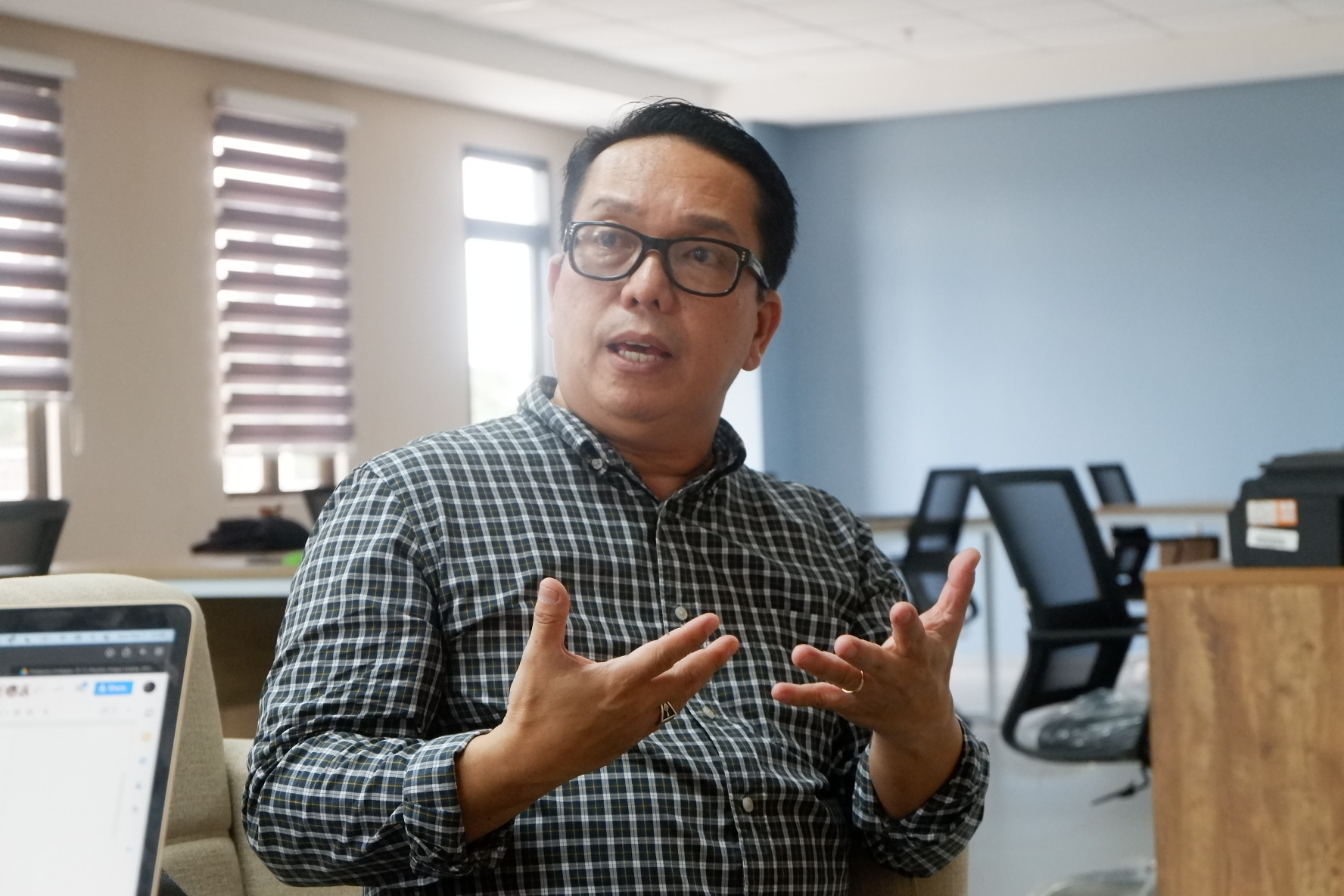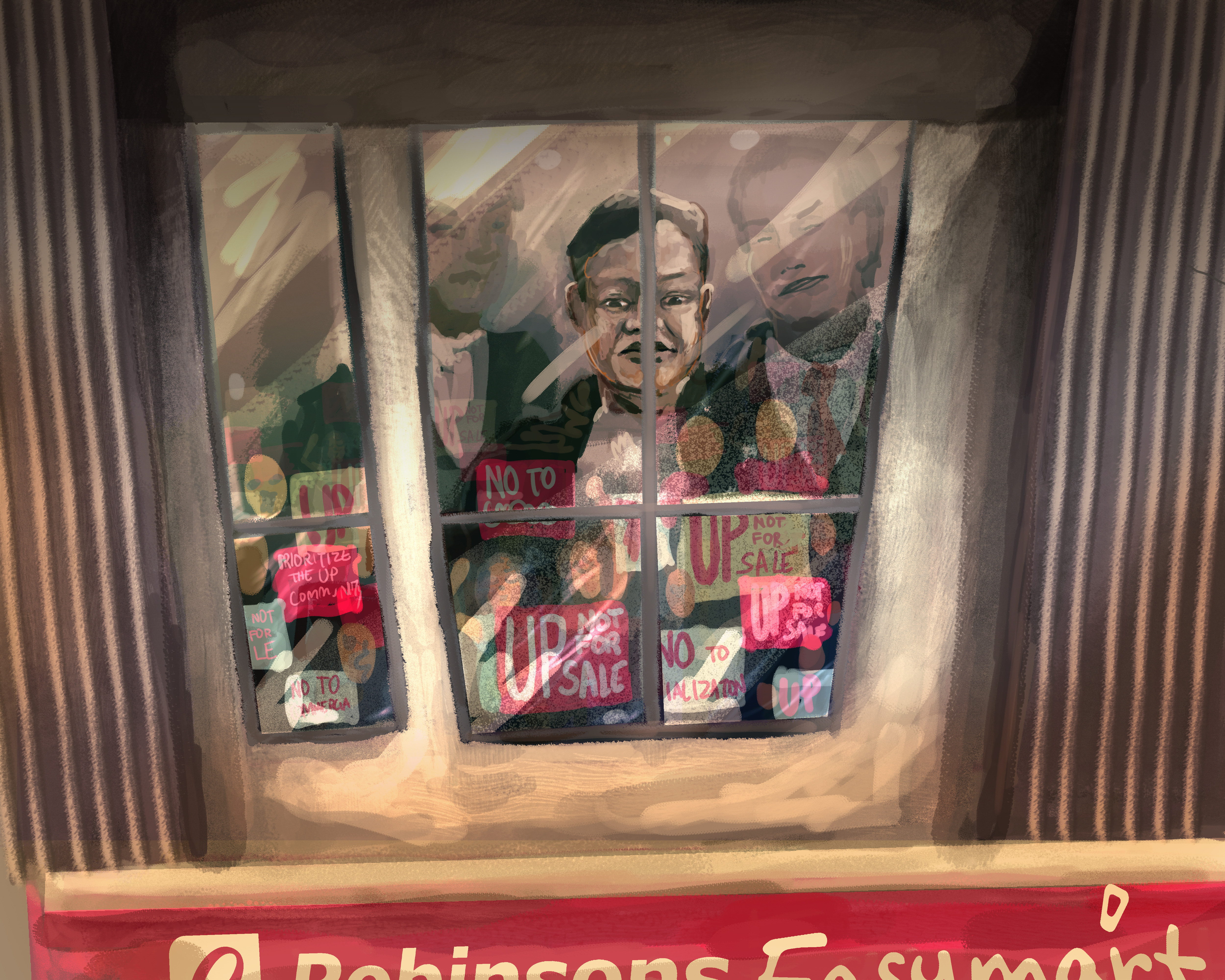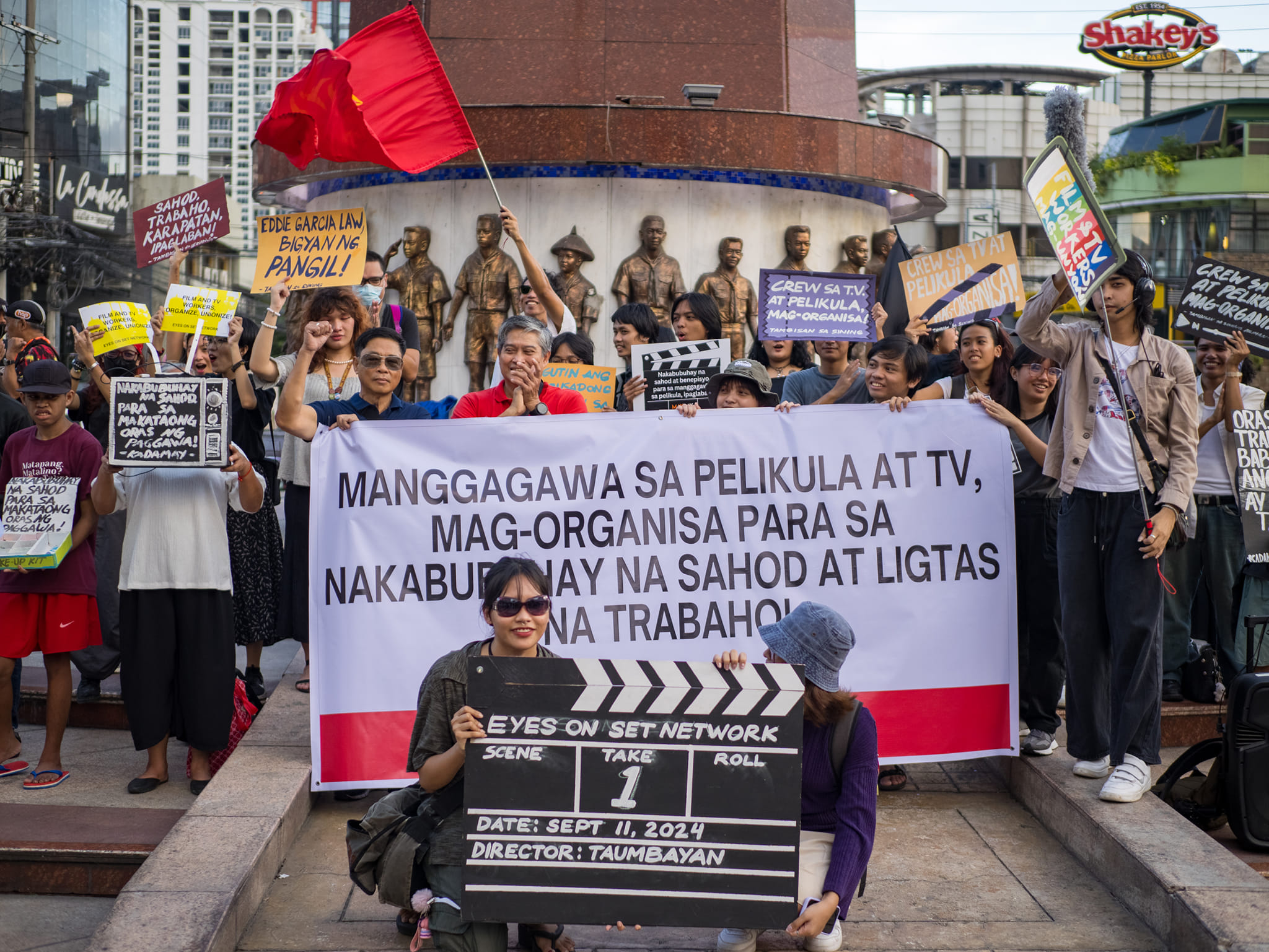This interview with UP presidential nominee Patrick Alain T. Azanza was conducted by the Collegian editorial board on November 7. This has been edited and condensed for clarity.
Philippine Collegian (PC): Your vision paper is entitled “Unibersidad ng Panghinaharap.” How do you imagine that in concrete terms?
Azanza: Data-driven dapat ang UP, and if we have eight constituent universities, we should have a cyber university. There should also be automation and digitization, so that when we go to the level of the UP Board of Regents, the policies are based on data. Data will give you options—not emotional, not political—but just plain data to tell you, “These are your options, regents.”
And given all those information, you could now vote based on what is scientific, and you know that you are making decisions based on facts and numbers, because right now, the way I sense it when I talk to those members of the UP Board of Regents, they don’t seem to have those. And so, if you do not collate those date, you are not able to decide because you don’t have the complete information, because the university is not data-driven. And so that’s what I want to do because it’s possible and it does need that much money.
PC: What do you think is the students’ primary needs now?
Azanza: Ang pangangailangan ng mga mag-aaral ngayon ay yung pag-alalay sa kanila para maayos na makabalik sa panibagong normal. Kasama na diyan ang mental health, suporta sa teknolohiya na kailangan nila. Kasama na diyan yung pakikipagtulungan sa kanilang mga magulang, kung hindi man sila maaaring makabalik kaagad sa kampus, sa kanilang kinalalagyang barangay at komunidad, para higit nilang mas mapaghandaan, maipagpatuloy.
PC: From that, in terms of learning, should UP go largely virtual?
Azanza: Iyon ang mas nakikita ko. I’d like to bring the university to where it should be, in terms of curricular modernization and research orientation para higit tayong maging siyentipiko, makabago, at nakakasunod. When you, for example, study history in the future, I could foresee that you will be studying history in terms of virtual facilities that you will get yourself into, 3D or 4D.
Sinasabi ko ito dahil baka maraming tao ang magsasabi, anong pinagsasabi nitong si Dr. Azanza, ang hirap unawain, parang wala siya sa hulog. But this is exactly what happened years back when we were thinking na ito yung telepono natin, then, suddenly, you have this cellphone that can have your clock, calendar, dictionary, movies. So, I think this is not something absurd, but this is something that we must already embrace before it’s too late for us.
PC: You have a very visionary outlook. But then again, UP is an academic institution—we have shared governance here. Do you think you can realistically execute all your plans?
Azanza: The vision can be calibrated. But it goes back to data. If you seem to be against my proposal, then I present to you the options, based on data. With predictive analytics and AI, we can predict the consequences of the proposals and options I am giving my colleagues. And I trust the UP mind, the UP faculty, and the UP student to make the right decisions.
PC: How do you envision yourself as an administrator?
Azanza: My track record will bare me at hindi ko kailangang maglubid ng kahit anong salita. Iba yung istilo ng pamumuno ko at sinabi ko na ito noon sa UP that I believe in shared governance. I believe that the students, faculty, and staff are co-equals of the president. I will make sure na hindi ninyo kailangan humingi sa akin ang mga datos at impormasyon. Has there been a UP President that has ever done that? I doubt it. Even the time of Francisco Nemenzo who is supposedly a progressive mind, hindi naman, di ba? So ganito ang klase ng pamumuno na meron ako at hindi ko ito sinasabi na parang pinangangako lang—ginawa, ginagawa, at gagawin ko ito.
PC: But you have been long separated from UP. How do you plan to govern a university, given that some call you an “outsider?”
Azanza: I have not really disassociated myself from UP. I have relationships with the UP community, and in fact noong nagkaroon ng height ng COVID-19, nakipag-ugnayan ako sa Red Cross ng UP and gave assistance also to UP Los Baños students na tinamaan ng COVID-19. Sa tingin ko maling sabihin na outsider ako dahil I have not been seperated from UP, especially with the alumni. I’m very much a part of UP and if you look at me, my DNA is UP. People are saying na I’m not UP, then they’re dead wrong dahil yung pagmamahal ko sa unibersidad at sa ating bansa ay laging naroon. Hindi ito nawala.
Kung personal na agenda sa pagtakbo, wala naman siguro dahil yung sweldo ng Catanduanes State University president at UP president, pareho lang. Sakripisyo pero isang pag-aalay na ikararangal mo na alam mong may magagawa ka sa mahal mong unibersidad at sa inang bayan. That idealism perhaps is still there.
PC: From your vision paper, you want to strengthen UP’s ability to fund itself. How will you reconcile that plan with UP’s public character as the national university?
Azanza: Nais kong i-emphasize that I never said na hindi tayo kukuha ng suporta galing sa gobyerno. Ang sinasabi ko nga as much as we can get, let’s get that because the state owes us. Ang vision ko is not something commercial. Hindi siya basta-basta komersyalisasyon lang, kundi, something na magiging “playground” ng ating mga estudyante dahil ma-e-expose sila sa industry practices. To that end, I think we have to review the agreement that we have with Ayala in the TechnoHub and Town Center. I think we have to review the agreement that we have with Ayala TechnoHub because we are at the losing end.
PC: How, then, will you deal with communities living inside UP campuses?
Azanza: Hindi mo lang sila basta aalisin, kailangan ng komprehensibong pagpaplano, meron kang relocation area ng mga komunidad, kasi tao sila. Within your UP land, mag-a-allocate ka ng lupa para sa kanila. Dapat may social equity side itong lahat ng mga economic zones or development natin sa ating mga pag-aari ng UP.
PC: How will you rate President Danilo Concepcion’s term, from one to 10?
Azanza: I’ll give him a seven. He’s a fundraiser and I would credit him for the infrastructure things that are happening here in the university. Of course, there’s the challenge of our decline in the world university ranking which reflects on our capabilities as a research and academic organization. So yun yung tingin ko. But I would like to give him credit for what he has done for the university and I think he deserves that.
PC: Who do you think is the most capable of the five other nominees?
Azanza: As I’ve said, I’m data-driven. The number of reactions won’t lie—ang second sa akin ay si Fidel Nemenzo. I’ll go for Nemenzo. Dapat ganun naman. Numero lang ang magsasabi ng katotohanan. ●







